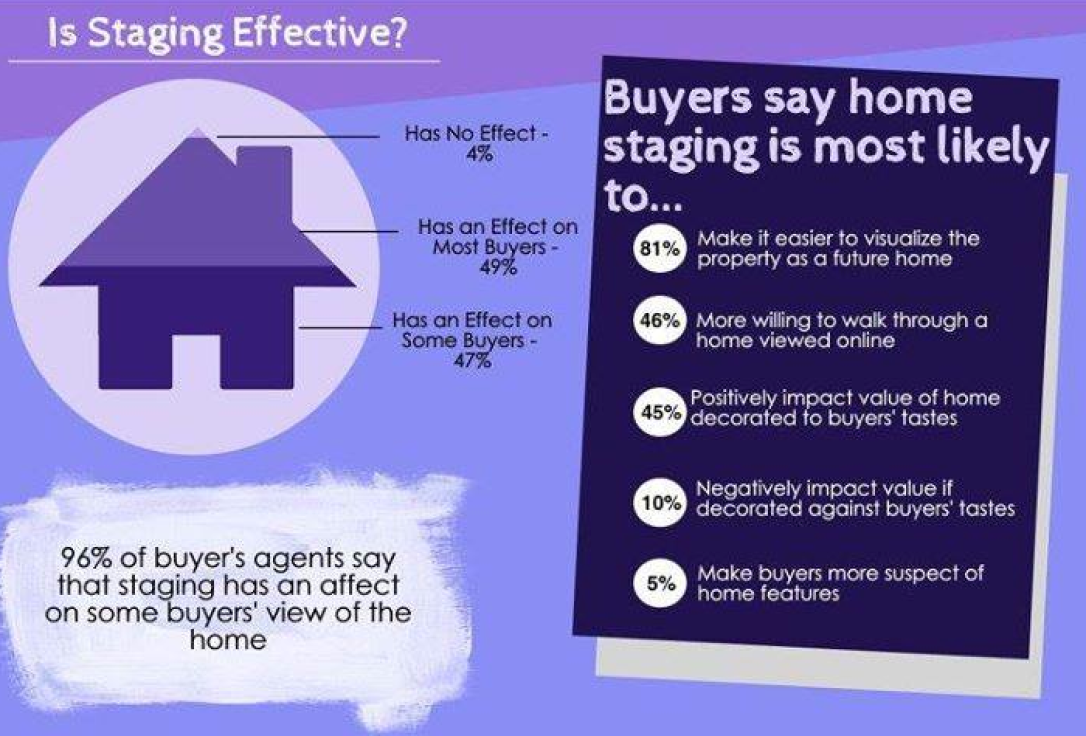
Category: Uncategorized
11 Home Hazards to Avoid
By Marisa Villarreal
If you ask most people where they feel the safest, chances are the answer will be in their own home. But home safety depends on a variety of factors, and potential dangers run the gamut from structural hazards like termites and faulty wiring to problems related to a home’s location and siting, such as drainage and flooding. Here are 11 of the most common hazards that homeowners are likely to encounter. To keep your home truly safe, be aware of these hazards and consider how they can be remedied.
 Source: shutterstock.com
Source: shutterstock.com
Deadly lead
We all know it’s dangerous, but lead paint is especially bad for children and pets. Homes built before 1980 may contain this hazardous stuff. Test kits can confirm lead’s presence in your home, but hire a certified professional to remove it.
 Source: The Corcoran Group
Source: The Corcoran Group
Indoor air quality
Good indoor air quality reduces the impact of allergies and asthma. One good way to eliminate allergens is by opting for hardwood or laminate flooring instead of carpeting. An air-filtration system or new air conditioner can help control allergens. Houseplants can also help improve indoor air quality — as well as your mood.
 Source: megankhines via Flickr Creative Commons
Source: megankhines via Flickr Creative Commons
Radon watch
This radioactive gas can move into your house through cracks in the foundation. Radon is the second leading cause of lung cancer, so it’s important to mitigate it if it’s found in your home. Sealing cracks in the foundation is one step you can take yourself; other solutions may depend on your home’s foundation.
 Source: State Farm via Flickr Creative Commons
Source: State Farm via Flickr Creative Commons
Rising water
Flooding is one of the most common hazards for homeowners, regardless of where they live. Whether the water rises because of excessive snowmelt or a serious rain — or a damaged pipe in the basement — be prepared. Particularly if your home is in a flood-prone region or an area with a high water table, make certain you have a sump pump in good working order that can deal with excess water.
 Source: shutterstock.com
Source: shutterstock.com
Termites
Hire a professional to regularly inspect for termites. Preventing infestations before they happen will save you time and money. Termites love damp wood, so repair indoor leaks immediately, and never store your firewood near your home’s foundation or crawl space.
 Source: State Farm via Flickr Creative Commons
Source: State Farm via Flickr Creative Commons
Electrical fires
Most electrical fires result from faulty outlets or old wiring. Protect your home by replacing faulty wiring and outlets, and installing an Arc Fault Circuit Interrupter (AFCI). The U.S. Consumer Product Safety Commission estimates that the use of AFCIs could prevent 50 percent of electrical fires.
 Source: Judy van der Velden via Flickr Creative Commons
Source: Judy van der Velden via Flickr Creative Commons
Carbon monoxide
This toxic gas is the number-one cause of poisoning deaths in the United States, but such tragedies can be prevented by installing a CO detector, which will alert you to carbon monoxide’s presence in your home. Never leave cars or grills running in a small space, and properly ventilate fuel-burning appliances like furnaces, water heaters, ovens and dryers to prevent CO buildup.

Asbestos
Designated a carcinogen in the 1970s and largely banned, asbestos can still be found in older homes. If you discover asbestos-containing materials in your home, don’t panic. If it’s not damaged or disturbed, asbestos is not likely to pose a health risk. With a little research, you can learn strategies for dealing with its discovery and arranging for professional removal.
 Source: shutterstock.com
Source: shutterstock.com
Mold
Unsightly and hazardous to your health, mold is a problem that should be tackled early, as soon as it’s discovered. Prevent both visible and undetectable mold by keeping moisture levels low and quickly drying up any standing water. Once mold spreads, you’ll need to act quickly to remove it completely or hire a professional.
 Source: Sam Fam via Flickr Creative Commons
Source: Sam Fam via Flickr Creative Commons
Falls
Falls are one of the leading causes of unintentional injuries in the United States, according to the National Safety Council. Remove tripping hazards from hallways, stairs, and walkways. Avoid standing on a chair, table or other surface to tackle a quick job. And when you use a ladder, make certain it is secure.
 Source: Graham Richardson via Flickr Creative Commons
Source: Graham Richardson via Flickr Creative Commons
Gas leaks
Although natural gas is touted as one of the safest and cleanest-burning fossil fuels, a gas leak can pose serious risk, whether the leak is detected or not. If you suspect a gas leak — usually accompanied by a sulfuric, rotten egg odor — leave the house immediately and contact your gas provider.
Just Listed in Phoenix, AZ!
New lakefront listing in South Phoenix! Click the link for more info: http://1581137th.isnow4sale.com
8 steps to buying a home
8 Steps to Buying a Home as presented on Kw.com!
The decision to purchase your first home is one of the biggest and best choices you could ever make. After all, a home is the largest – and most emotional – investment most people will face in their lifetime. So, how do you know if it’s the right time for you to buy?
There is never a wrong time to buy the right home. The key is finding the right buy and taking the time to carefully evaluate your finances.
A home purchase is an important step that can provide many advantages. Purchasing your own home is a great investment that can deliver several financial benefits – equity build up, value appreciation, automatic savings plan – not to mention a new sense of pride!
Step 2: Hire an Agent
When you’re looking for a real estate professional to help you, know that above all else, good agents put their clients first. This is your dream, and your agent is your advocate to help you make your dream come true.
A great real estate agent will:
- Educate you about the current conditions of the market.
- Analyze what you want and what you need in your next home.
- Guide you to homes that fit your criteria and budget.
- Negotiate on your behalf to get you the best deal possible.
- Check and double-check paperwork and deadlines.
- Inform and discuss with you, and suggest solutions to solve any problems that may arise.
Step 3: Secure Financing
To make the financing process as painless as possible, ask your agent to introduce you to the preferred financing consultant. This professional will work with you and your agent to make sure the financial aspect of your home purchase is stress free.
So you’ve met with your trusted advisors, and now you’re ready to begin your search. But how or where do you start? There are a lot of homes out there, and diving in without a guide can become overwhelming and confusing. The right home will meet all your important needs, and as many of your additional wants as possible.
Determine your needs and ask yourself:
- What amenities are crucial for you and your family?
- How much space do you need and why?
- Which is more critical: location or size?
- Would you be interested in a fixer-upper?
- How important is home value appreciation?
- Is neighborhood stability a priority?
- Is accessibility to main routes a priority?
- What features are not negotiable in your new property?
Step 5: Make an Offer
Once you’ve found a home you love, the next step is deciding on a price. It’s important to remember that a home is an investment. Your agent can give you information on other properties in the neighborhood to help you ensure you make an informed decision when it comes to price. Look to your agent to explain and guide you through the offer process.
Some things to consider when deciding on the best price point are:
- List price – Start with the price point that the home is listed at. This will give you a base when looking at the home’s value.
- Market Analysis – Your agent will give you an idea of comparable home values in the neighborhood to help you decide if the price point is on par.
- Improvements – Your agent can give you a list of improvements made to the home and help you determine its market value.
Step 6: Perform Due Diligence
Once you are under contract, you’ll have 10 days (unless otherwise coordinated) to complete a full home inspection. Hire a home and termite inspector to thoroughly go through the home and point out any major problems.
Knowing what work has and has not been done to your home is important information to have in the buying process. While updates can increase your home value, damages can take money out of your pocket. Your main concern is the possibility of structural damage, which can come from water, shifting ground or poor construction.
Very often a problem appears to be big, but can be fixed with very little effort and not a huge budget.
Step 7: Close
Once you’ve determined a price point you’re comfortable with, you’re in the “home” stretch! But, in order to ensure that you don’t put the property purchase at risk, you have a couple responsibilities that you’ll need to keep in mind:
- Staying in control of your credit and finances – Do not make any large purchases during this time. It’s important to keep your financials steady throughout the buying process. Talk to your financial consultant for guidance.
- Keeping in touch with your agent and financial consultant – It’s important to stay in constant communication with your Keller Williams agent and financial guide during this process. Be sure to return all phone calls and complete paperwork promptly. Also, don’t be afraid to ask questions. Your team is there to help you!
Step 8: Protect Your Assets
Congratulations, and welcome home! The home-buying process is complete, which means it’s time for your maintenance plan! It’s now your responsibility, and in your best financial interest, to protect your investment for years to come. Performing routine maintenance on your home’s systems is always more affordable than having to fix big problems later. Be sure to watch for signs of leaks, damage and wear.
And remember, just because the sale is complete, your relationship with your Keller Williams agent doesn’t need to end! After you buy, your agent can still help you – providing information on the real estate market, finding contractors and repair services, and even tracking your home’s current value.
Happy home-owning!
Portable Home Storage from Advantage Inspection Service
It’s almost here!! Keller Williams Red Day May 14, 2015!
We are so excited for red day and I love watching the countdown on our website. We just did another site visit and we’re getting all of the last minute details in order. In an effort to make this one of the best transformations, we are looking for donations from people all over the valley, heck all over the country, to support this amazing cause.
If you or anyone you know would like to make a donation to the Boys and Girls club please let me know!
Here is the site where you can learn more about the cause, register to volunteer or make a donation. When making a donations make sure to put REDDAY in the “referred by or make a gift in honor of” section so they know where they money should go!
Preparing for a Home Inspection
 Buying or selling a home? A home inspection is most likely in your near future. While a buyer will almost always request an inspection, sellers are frequently jumping ahead of the game and hiring their own home inspector.
Buying or selling a home? A home inspection is most likely in your near future. While a buyer will almost always request an inspection, sellers are frequently jumping ahead of the game and hiring their own home inspector.
Here are some tips from Advantage Inspection Service for preparing for a home inspection:
While the home inspection is conducted by the home inspection professional, both sellers and buyers can prepare themselves for the process. Sellers will have the most work to do- prepare the house in advance to save time and make the most of the home inspection visit.
To start, sellers should clean their home! This may seem obvious, but it is often overlooked. A home inspector does not judge the home or its mechanical systems by its cleanliness, but a home in disarray may lead the inspector to wonder what lurks underneath. In addition, it will be much easier for the inspector to do their job without having clutter or belongings in the way.
In particular, areas around appliances, electrical panels, heating and cooling units, water heaters and shut-off valves should be clear and available to the inspector. Dishwashers and washing machines should be emptied because an inspector will turn them on, even if they are not included in a sale to make sure plumbing and electrical lines are working.
Home inspectors also need access to any attic space, garage shed, basement, or crawlspace. Doors should be open and unlocked.
As a seller, stay ahead of the game buy fixing obvious repairs before the inspector points them out. Fixing items such as handles, knobs, faucets, broken windows or hanging cabinets will keep down the number of items on the home inspection report. Other issues that may send up a red flag for an inspector include ceiling stains, chimney defects, fogging windows, rotted exterior wood or mold.
The seller may not care to fix a larger issue such as an aging roof, but it makes sense to acknowledge such an issue and then adjust the home price accordingly. Always keep receipts and invoices for repairs.
Buyers should always plan to meet the inspector at the end to go over everything. Attending the inspection gives you the chance to learn your way around the home and get an in-depth look at the property. Be on time and having a list of pertinent questions that they wish to ask.
Remember that every home inspection will uncover some flaws in the property, even if it is a new build. Expect problems and be prepared to work them out with the seller.
For a full list of how to prepare for a home inspection,visit the National Association of Home Inspectors site.
Is Home Staging Effective?
Walking into a home, you’re senses are immediately struck. Your nose picks up an aroma, your eyes draw in all of the features, your ears pick up on any sounds coming from the lights, fans or appliances, and your mind begins to race. Immediately you ask yourself, could I see myself living here?
With so many factors to consider, why not set the stage for your possible buyer? Allow your buyer to envision themselves living in your home with some simple staging.
If you’ve got a smaller budget to work with, focus on the top three rooms. Both buyers and sellers agents agree that the living room, kitchen and Master bathroom are the top three most important rooms to stage. Beyond those rooms, focus on the dining room, bathrooms and extra bedrooms.
According to the National Association of Realtors, the median amount spent on staging is roughly $675. A majority of the time the seller’s agent will offer to pay for this service, however it’s not uncommon for the seller to get their home in shape with some staging before it hits the market. For a seller, spending about $675 on staging can be the difference between getting their house sold or not and within the time frame they desire.
What do the experts say? Is staging effective? Let’s check the stats… 
6 Ways To Boost Your Credit Score in 2015
Improving your credit is key when buying a home. Here are some great tips to boost your credit score this year!
6 Ways To Boost Your Credit Score in 2015
Have you made a New Year’s resolution for 2015 yet? Why not make your New Year’s resolution something that will ultimately help you in the long run – like improving your credit score. Improving your credit score can have a number of benefits; however, it will take a lot of patience and self-control. Here are six ways you can improve your credit score in 2015.
Pull Your Credit Reports
This should be your starting point in your journey of improving your credit report. Many people don’t pull their reports, but how will you know if you’ve improved your score without a starting point?
Make Payments
Making payments on time or paying off past due accounts are both super important when it comes to improving your credit score. This is because a lot of your credit score is based on your payment…
View original post 231 more words
Underestimate Keller Williams at Your Own Risk
Without the support and training from my KW office I wouldn’t be where I am at today. Thank you to KW & KWBP for putting your agents and their goals as a priority. Can’t wait to see what 2015 brings us!
Explosive growth, agent-centric, and resource-abounding; just 3 reasons why I’m humbled to be apart of this thriving, international real estate organization.














